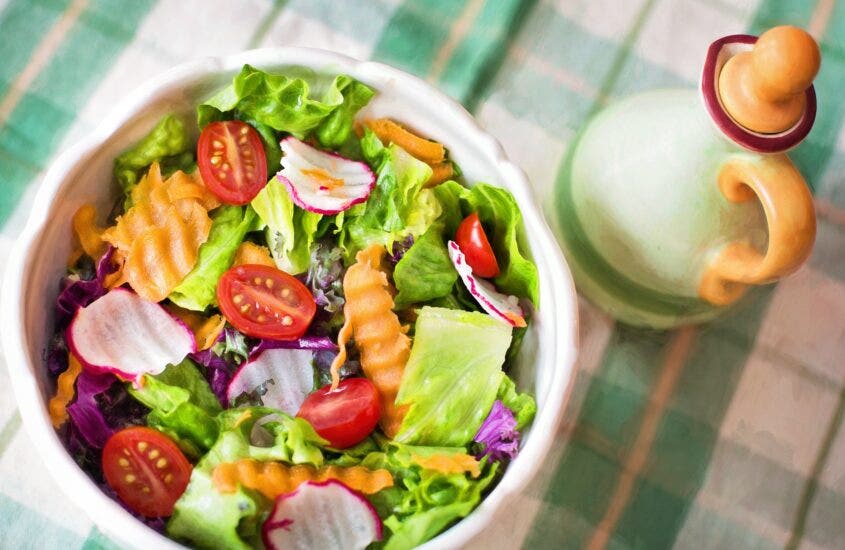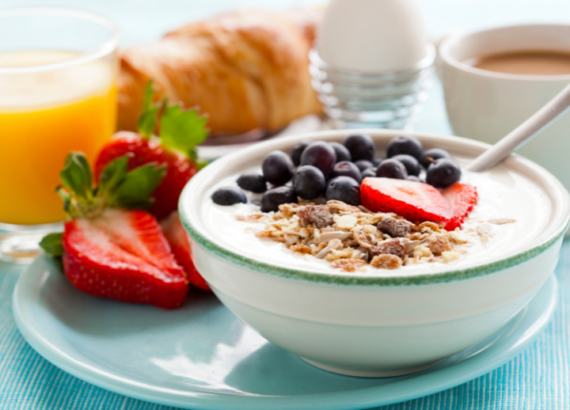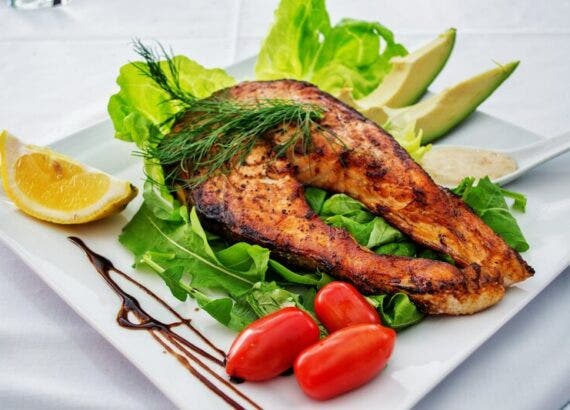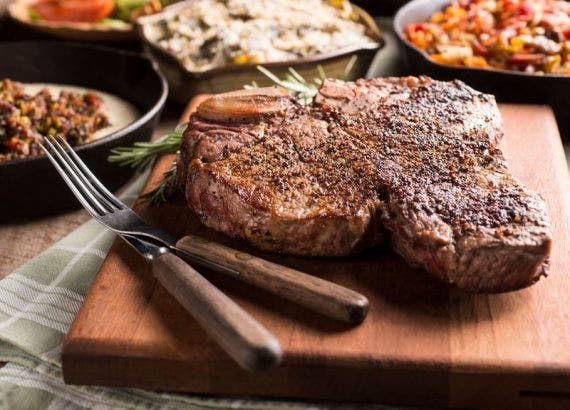How many calories should I eat per meal to lose weight?

To stay healthy, it is important to watch your calorie intake. If you’re wondering, ‘how many calories should I eat per meal to lose weight?’, we’ve done our research and found the answer.
Every day, to lose weight, you should eat between 200 and 400 calories for breakfast, 500-700 calories for lunch, and 500-700 calories for dinner. You should also incorporate a morning and evening snack for a total of about 400-500 more calories. So, to lose weight, you should be eating between 1500 and 2000 calories per day. Research has shown that reducing your caloric intake by about 500 per day will contribute to around one pound of weight loss.
The number of calories you should consume depends on several other factors such as age and your activity level. If you’re active and young, you can afford to eat more calories. As you get older, be sure to stay active; otherwise, you will need to decrease your caloric intake.
Table of Contents
How Many Calories For Breakfast?

It’s important to eat at least 200 calories for breakfast and max out at around 400 calories. As the saying goes, “breakfast is the most important meal of the day.” It can help you be in a better mood on a full stomach, and it gives you the energy to tackle your day head-on.
You may have also heard about the importance of eating a “balanced breakfast.” All the popular cereals, oatmeals, yogurts, and other products love to advertise their products in this way.
Oatmeal and eggs are my go-to for a balanced breakfast but you can eat whatever nutritious meal you like.
Check out some of our favorite recipes in this article on how to make healthy meals for your family.
Be cautious of sugary cereals; even though you may get the calories you need, you’ll consume much of your daily intake of sugar.
Breakfast is one of the easiest meals to skip. In fact, most of my friends skip breakfast. If you get up too late before school or work, it’s easy to go through your morning routine without even thinking about eating. But you need some calories to keep your energy up throughout the day!
How Many Calories For Lunch?

Eat about 500-700 daily calories for lunch. We have a wide selection of great recipes in our article above that you can check out.
You have a lot of options to choose from for lunch. Salads are a great option, with some protein like chicken or steak, but go light on the dressings. Sandwiches are great for lunch too, and it’s easy to make smaller portion sizes for the kids.
Stay away from fast foods for lunch. Although you may get 500 calories from a cheeseburger and 500 calories from a chicken salad with vinaigrette dressing, the salad is the much more nutritious option.
It will keep you full for a longer period of time and it contains a lot less fat which will help accelerate weight loss.
How Many Calories For Dinner?

Aim for about 500-700 daily calories for dinner. This is the same size meal as lunch, and depending on your activity level, you can increase the calories here.
Don’t eat too close to your bedtime, though. The American Journal of Gastroenterology found that shorter dinner-to-bed times correlated with a higher frequency of acid reflux. Ideally, eat dinner at least three hours before you go to bed so that your stomach has time to digest.
Is it healthy to eat 1200 calories a day?
1,200 calories per day are approximately the cutoff for healthy eating. I know that when I eat 1,200 daily calories or less, I end the day pretty hungry. If you work out consistently, I would not recommend eating just 1200 calories per day. But if you are not very active or you are small, this may be an appropriate amount for you.
Can I eat all my calories in one meal?
It is possible to eat all your calories in one meal. Just be sure that the meal is balanced with fruits, vegetables, protein, and carbs.
But, if you are eating fast food or other high-fat foods using this strategy, you will not feel very good on a daily basis. This will be a hard habit to sustain and it will also be difficult to exercise daily using this strategy.
Whenever I exercise, I prefer to eat something before and after my workout to help make up the calorie deficit. But you won’t be able to do this if you eat all your calories in one meal.
Several studies have been conducted on the effectiveness of the one-meal-a-day fasting diet, sometimes called intermittent fasting. This method has its benefits and drawbacks, but in general, you want to be careful about committing to a dieting strategy like this in the long term. And of course, consult a doctor before altering your diet in extreme ways.
How do you split calories between meals?
I revealed one popular way to split calories between meals at the beginning of this article:
- 200-400 calories for breakfast
- 500-700 calories for lunch
- 500-700 calories for dinner
Since the total daily calories will vary depending on the person, it’s honestly up to you how you want to split the calories. If you like a larger lunch, then maybe go with a lighter breakfast. Or if you want all your meals to be about the same size, split the calories evenly for breakfast, lunch, and dinner.
In general, as long as you hit your daily calorie goal and as long as you are eating healthy food, you will likely begin to see results. To lose one pound per week, you’ll want to reduce your daily calories by about 500, assuming you’re eating enough to maintain your current weight. To lose two pounds per week, reduce your daily calories by 1000. Again, consult a doctor or licensed nutritionist before significantly altering your diet.
If you’re exercising, you’ll burn more calories per day and won’t need to cut your total calories as much as if you weren’t exercising. Also, don’t forget to factor in calories from supplements like protein, creatine, and meal replacement drinks or bars.
If you’ve ever wondered, “how many calories should I eat in a day?” know that your daily calorie needs also depend on your weight, age, and eating habits, so if you have any specific concerns about your calorie intake, consult a nutritionist or your doctor. Harvard Health has these guidelines.
How many calories should I eat in a day?
The number of calories you should consume daily depends on factors such as your age, gender, height, weight, physical activity level, and overall health goals. Here are some general guidelines to help you determine your daily calorie needs:
- Basal Metabolic Rate (BMR): This is the number of calories your body burns at rest to carry out essential functions such as breathing, circulating blood, and maintaining body temperature. You can use an online BMR calculator to estimate your daily calorie needs based on your age, gender, height, and weight.
- Physical Activity Level (PAL): The amount of calories you need also depends on how physically active you are. A person who is highly active and engages in regular exercise will require more calories than someone who is sedentary.
- Health Goals: If you are trying to lose weight, you will need to create a calorie deficit by consuming fewer calories than you burn. If you are trying to gain weight, you will need to consume more calories than you burn.
As a general guideline, the average adult requires around 2000-2500 calories per day. However, this can vary widely depending on the factors mentioned above. It is recommended that you consult with a registered dietitian or healthcare provider to determine your specific daily calorie needs.
What should a woman eat for breakfast to lose weight?
When it comes to losing weight, breakfast is an important meal as it jumpstarts your metabolism and provides you with energy for the day ahead. Remember, weight loss is not just about what you eat for breakfast but also your overall diet and physical activity. It’s important to make healthy choices throughout the day and stay consistent with your healthy habits.
Here are some breakfast options that can help women lose weight:
Eggs: Eggs are a great source of protein and can keep you feeling full for longer. You can prepare them in a variety of ways, such as scrambled, boiled, or as an omelette.
Greek Yogurt: Greek yogurt is high in protein and low in calories, making it a great breakfast option for weight loss. You can top it with fresh fruit or nuts for added flavor and nutrients.
Oatmeal: Oatmeal is a filling and nutritious option. It is high in fiber and can help keep you feeling full until lunchtime. You can top it with fruit or nuts for added flavor and nutrition.
Smoothie: Smoothies can be a great option if you’re short on time. You can include fruits, vegetables, and protein powder to make a nutritious and filling meal.
Avocado Toast: Avocado toast is a trendy and delicious option. It provides healthy fats and can help keep you feeling full throughout the morning.
Whole Grain Toast with Nut Butter and Fruit: This breakfast option provides complex carbohydrates, healthy fats, and protein. Choose a whole grain bread and spread nut butter (such as almond butter or peanut butter) and top with sliced fruit like banana or strawberries.
Cottage Cheese with Fruit and Nuts: Cottage cheese is a good source of protein, and adding fruit and nuts can provide extra fiber and healthy fats.
Breakfast Burrito with Whole Wheat Tortilla: A breakfast burrito with scrambled eggs, vegetables like peppers and onions, and a whole wheat tortilla can provide a satisfying and filling meal that’s low in calories.
Chia Pudding: Chia pudding is a healthy and nutritious meal that’s easy to make. Mix chia seeds with almond milk or coconut milk and add fruit and nuts for flavor and nutrients.
High-Fiber Cereal with Milk and Fruit: Choose a high-fiber cereal and top with low-fat milk and fresh fruit for a filling and nutritious breakfast.
Veggie Frittata: Whip up a frittata with eggs and lots of colorful veggies like bell peppers, onions, spinach, and tomatoes. You can also add a sprinkle of cheese or feta for added flavor.
Protein Pancakes: Make pancakes using protein powder, whole grain flour, and low-fat milk or almond milk. Top with fresh fruit and a drizzle of honey or nut butter.
Low-Fat Yogurt with Granola and Berries: Choose a low-fat or fat-free yogurt and top with granola and fresh berries. You can also add a spoonful of chia seeds or ground flaxseed for extra fiber.
Breakfast Quinoa Bowl: Cook up some quinoa and add nuts, seeds, fruit, and a drizzle of honey or maple syrup for a delicious and nutritious breakfast bowl.
Tofu Scramble: If you’re vegan or vegetarian, try making a tofu scramble with veggies like mushrooms, spinach, and onions. You can also add nutritional yeast for a cheesy flavor.
Sweet Potato Hash: Cook up some diced sweet potatoes with veggies like bell peppers and onions. Top with a fried egg or serve with a side of turkey bacon for added protein.
Green Smoothie: Blend some leafy greens like spinach or kale with fruit, almond milk, or coconut milk for a nutrient-packed start to your day.
Breakfast Salad: Mix together some greens, roasted veggies, a hard-boiled egg, and a sprinkle of cheese or nuts for a savory breakfast salad.
Low-Carb Breakfast Sandwich: Swap out the bread for a low-carb wrap or lettuce leaves and add turkey bacon, egg, and avocado for a satisfying breakfast sandwich.
Breakfast Soup: You sure can! If you’re in the mood for something savory, try making a breakfast soup with bone broth, veggies, and a poached egg on top.
How many calories should I eat a day by age?
Here’s a table that provides a general guideline for how many calories a person should consume daily based on their age and activity level.
Remember, this is just an estimate of your caloric needs. Your calorie requirements may differ based on factors like height, weight, body composition, and activity level.
To ensure you meet your specific nutritional needs, we recommend consulting a registered dietitian or healthcare professional.
| Age Range | Sedentary | Moderately Active | Active |
|---|---|---|---|
| 2-3 years | 1,000-1,200 Calories | 1,000-1,400 Calories | 1,000-1,400 Calories |
| 4-8 years | 1,200-1,400 Calories | 1,400-1,600 Calories | 1,400-1,800 Calories |
| 9-13 years | 1,400-1,600 Calories | 1,600-2,000 Calories | 1,800-2,200 Calories |
| 14-18 years (girls) | 1,800 Calories | 2,000 Calories | 2,400 Calories |
| 14-18 years (boys) | 2,000-2,400 Calories | 2,400-2,800 Calories | 2,800-3,200 Calories |
| 19-30 years (women) | 1,800-2,000 Calories | 2,000-2,200 Calories | 2,400 Calories |
| 19-30 years (men) | 2,400-2,600 Calories | 2,600-2,800 Calories | 3,000 Calories |
| 31-50 years (women) | 1,800 Calories | 2,000 Calories | 2,200-2,400 Calories |
| 31-50 years (men) | 2,200-2,400 Calories | 2,400-2,800 Calories | 2,800-3,000 Calories |
| 51+ years (women) | 1,600-1,800 Calories | 1,800-2,000 Calories | 2,000-2,200 Calories |
| 51+ years (men) | 2,000-2,200 Calories | 2,200-2,600 Calories | 2,400-2,800 Calories |
Cook comfortably with a Proline range hood.
Does your kitchen often fill up with smoke and steam? Do you find yourself scrambling when your smoke alarm goes off? If so, a range hood is perfect for you. Every day when you prepare breakfast, lunch, or dinner, turn your range hood on to vent cooking exhaust and grease out of your kitchen.
Proline Range Hoods offers beautiful and powerful range hoods that can adapt to any cooking style. Browse our wall hoods, island hoods, inserts, outdoor hoods, and much more here.
So, how many calories should I eat per meal to lose weight?
The number of calories should eat per meal to lose weight depends on several factors such as age, activity level, and your body’s desire for food at different times of the day. So, to lose weight, you should be eating between 1500 and 2000 calories per day, divided as follows. between 200 and 400 calories for breakfast, 500-700 calories for lunch, and 500-700 calories for dinner.
You could also incorporate a morning and evening snack for a total of about 400-500 more calories.
Hopefully, this helps you on your health journey. Whether you are looking for any of the following, we hope you found this article helpful:
- Extremely low calorie meals
- Calorie intake for men
- Calories needed per day
- Calories needed to lose weight
- Have you searched “calorie intake male weight loss”
- Should I incorporate healthy snacks?
- Should I eat fewer calories?
- Should I eat three meals a day?
- Is eating breakfast good or bad for losing weight?
Related Articles
How to Make Healthy Meals for My Family
How to Make a 7 Day Family Meal Plan
How many calories should I eat per meal to lose weight?
Every day, to lose weight, you should eat between 200 and 400 calories for breakfast, 500-700 calories for lunch, and 500-700 calories for dinner. You should also incorporate a morning and evening snack for a total of about 400-500 more calories. So, to lose weight, you should be eating between 1500 and 2000 calories per day. Research has shown that reducing your caloric intake by about 500 per day will contribute to around one pound of weight loss.
The number of calories you should consume depends on several other factors such as age and your activity level. If you’re active and young, you can afford to eat more calories. As you get older, be sure to stay active; otherwise, you will need to decrease your caloric intake.
How many calories for breakfast?
It’s important to eat at least 200 calories for breakfast and max out at around 400 calories. As the saying goes, “breakfast is the most important meal of the day.” It can help you be in a better mood on a full stomach, and it gives you the energy to tackle your day head-on.
How many calories for lunch?
Eat about 500-700 daily calories for lunch. We have a wide selection of great recipes in our article above that you can check out.
You have a lot of options to choose from for lunch. Salads are a great option, with some protein like chicken or steak, but go light on the dressings. Sandwiches are great for lunch too, and it’s easy to make smaller portion sizes for the kids.
How many calories for dinner?
Aim for about 500-700 daily calories for dinner. This is the same size meal as lunch, and depending on your activity level, you can increase the calories here.
Don’t eat too close to your bedtime, though. The American Journal of Gastroenterology found that shorter dinner-to-bed times correlated with a higher frequency of acid reflux. Ideally, eat dinner at least three hours before you go to bed so that your stomach has time to digest.
Is it healthy to eat 1200 calories a day?
1,200 calories per day are approximately the cutoff for healthy eating. I know that when I eat 1,200 daily calories or less, I end the day pretty hungry. If you work out consistently, I would not recommend eating just 1200 calories per day. But if you are not very active or you are small, this may be an appropriate amount for you.
Can I eat all my calories in one meal?
It is possible to eat all your calories in one meal. Just be sure that the meal is balanced with fruits, vegetables, protein, and carbs.
But, if you are eating fast food or other high-fat foods using this strategy, you will not feel very good on a daily basis. This will be a hard habit to sustain and it will also be difficult to exercise daily using this strategy.
How do you split calories between meals?
I revealed one popular way to split calories between meals at the beginning of this article:
200-400 calories for breakfast
500-700 calories for lunch
500-700 calories for dinner
Since the total daily calories will vary depending on the person, it’s honestly up to you how you want to split the calories. If you like a larger lunch, then maybe go with a lighter breakfast. Or if you want all your meals to be about the same size, split the calories evenly for breakfast, lunch, and dinner.








Comments are closed.